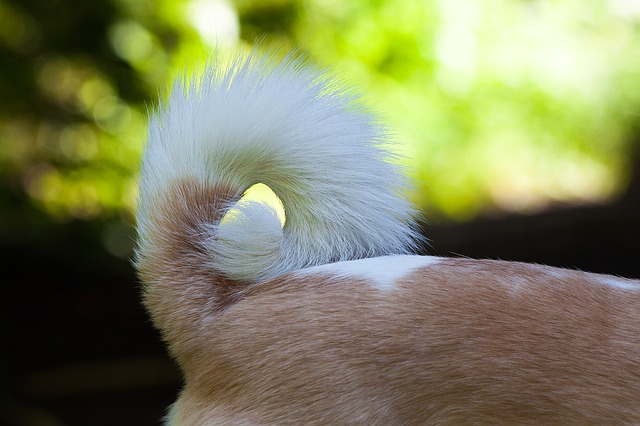Dogs express emotion or attention through tail position or movements. In this article we will explain how dogs communicate.

Since animals are unable to use the same language as humans, they take advantage of other ways to show their feelings. In this article we will explain how dogs communicate using their tails .
This is a very interesting topic that has always attracted the attention of researchers. In the past, for example, to understand how dogs communicate using their tails , even tests were carried out. The goal was to link particular movements, such as those of the tail, to specific behavioral patterns.
How do dogs communicate using their tails?
Dogs use their tails to communicate what they feel and feel. Therefore, it is very important to be aware of what they mean by each movement. It is a kind of information that is both useful and interesting.
These gorgeous pets communicate in other ways too. With the eyes, with the body or with the ears. But their main means of expression is their tail.
Knowing how to interpret how dogs communicate using it is very important to offer them what they need and understand them better, as they deserve.
Each dog “transmits” a lot of information through its tail : it is no coincidence that it can adopt different positions or perform particular movements, depending on the occasion.
His mood, his desire to play, how comfortable he feels in a situation. But even if he is afraid or happy. All of these are just some of the information your four-legged friend may want to share with you.
In short, a dog’s tail is a sort of “thermometer” for its emotions. And its position is also fundamental: it is not the same if it hangs to the right or to the left.
If a dog is happy, the first movement will be to the right, but if he feels threatened, he will move to the left. It’s like the tail is connected to the brain !
6 tail positions to understand how dogs communicate
There are different movements or postures that the animal performs to express what it feels or thinks at a particular moment. Pay attention to the most common ones and you will understand how dogs communicate :
1. Relaxed tail
It means that the animal is calm, he feels comfortable in the current situation and that nothing worries him. If you notice even slight movements, they are an additional sign of calm .
2. Tail down
This tail position is usually accompanied by other signs, including the ears down and the shrunken body. It means that the dog is feeling anxious, scared or stressed . He might also move it sideways, which means he doesn’t know very well what’s happening to him.
3. Tail between the legs
It is one of the best known positions of the tail , as it can show up on a stormy night or due to the presence of another animal that you are afraid of. The meaning is simple: in this case your four-legged friend is afraid of something.
4. Stiff tail
If the tail is horizontal – parallel to the ground – it is because the dog is in an alert position. He will appear alert and alert to anything, such as a danger or probable threat.
In some dog breeds such as the beagle, this is completely normal.
But the stiff tail can also mean something else: it all depends on its movement. If it’s slow, it can mean nervousness. If you notice a more pronounced swing, your dog is experiencing discomfort, excitement, or maximum attention.
5. Tail up
When this happens, it is because the animal feels very confident , even if it is in an alert position. For example, when he meets another dog in the park .
6. Tail in half and with quick movements
This is a classic attitude, which you know well: your dog welcomes you like this when you come home from work or if you are playing together. It is the most typical sign of happiness!
Some of you may wonder how it is possible to know how dogs communicate, whether they are dog breeds with very short tails (like the cocker spaniel) or curly (like the Pomeranian ).
The former may wiggle their little tail and show some emotions, but in the latter it is all a bit more complicated.
If you have a dog with a curved tail turned upwards or to which it has been cut from very young, you will need to pay attention to other body signals: the ears and posture will be essential to understand what it wants to communicate to you.






